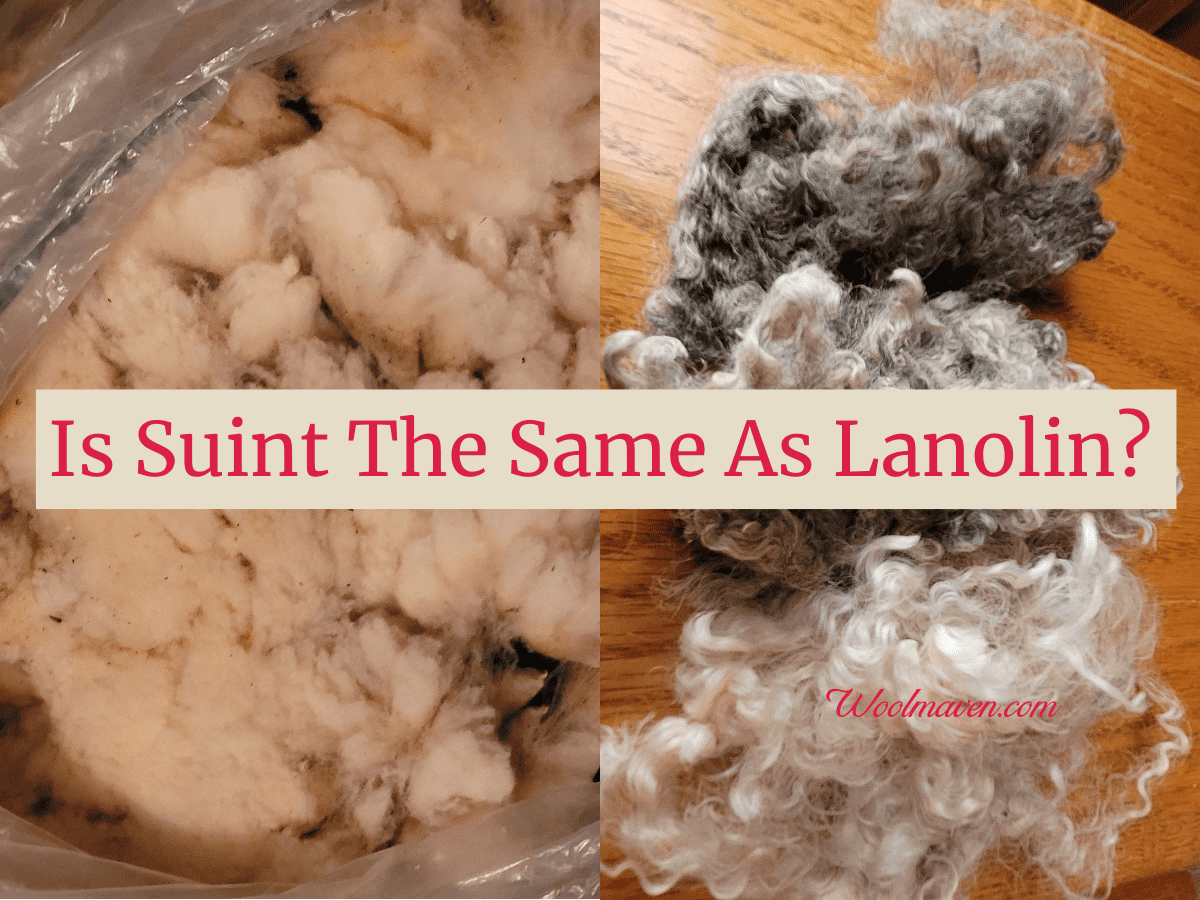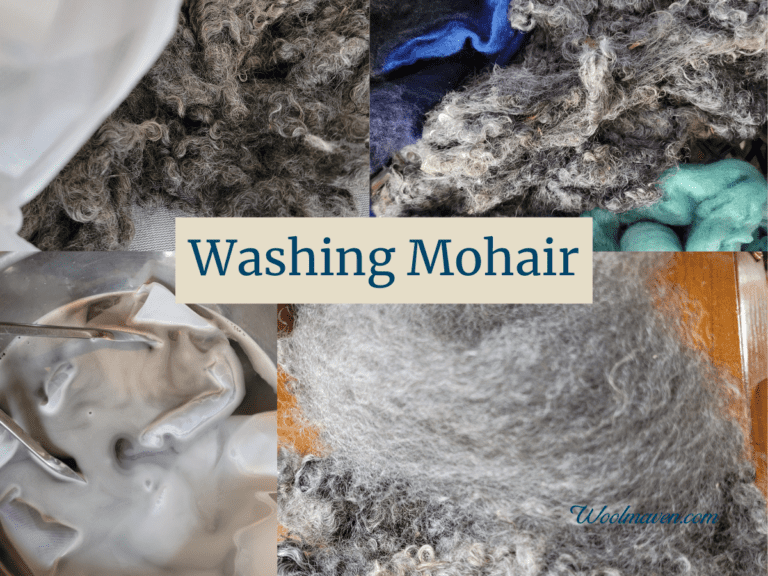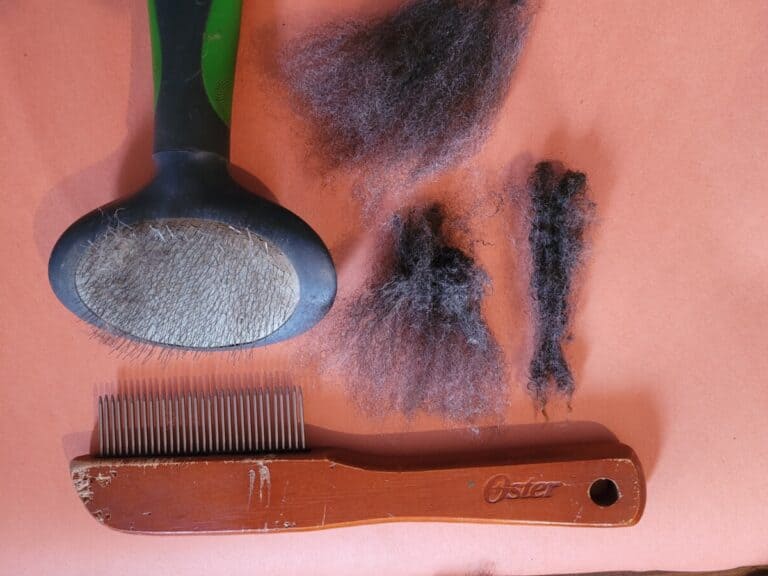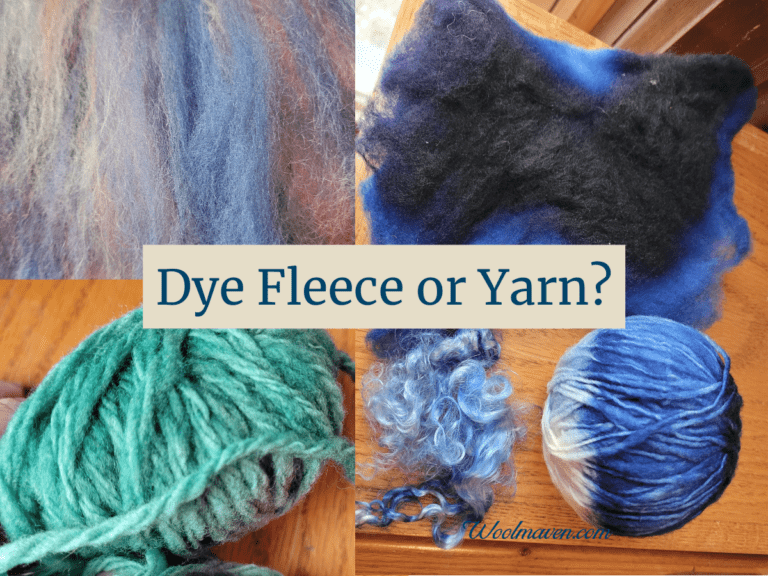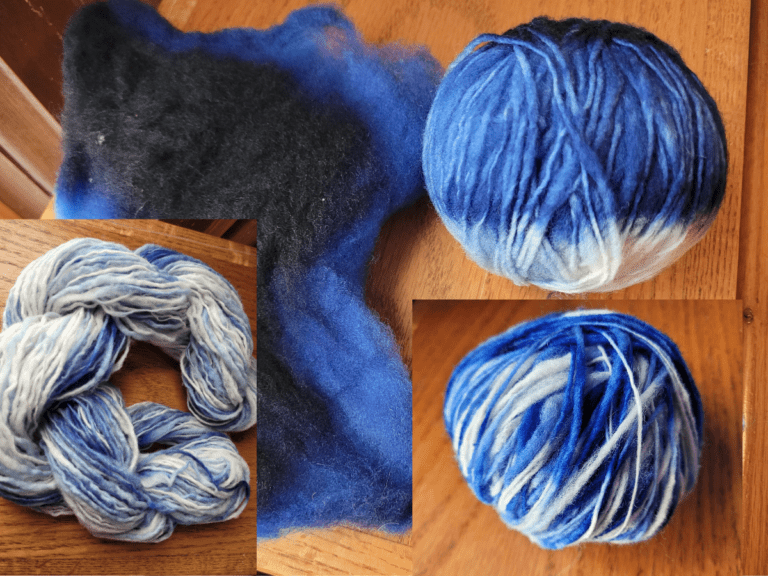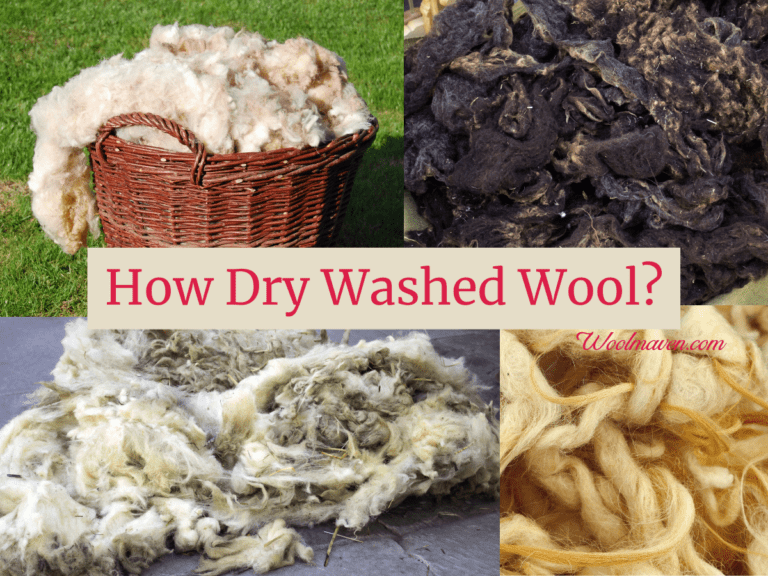Is Suint The Same As Lanolin In Unwashed Wool?
When you are looking into getting an unwashed fleece, you’ll come across some potentially confusing terms, specifically suint and lanolin. What are they and how do you deal with them?
Both suint and lanolin are found in unwashed (raw) wool. Suint is sheep sweat and dirt and is removed from wool by soaking in water. Lanolin is a natural grease in wool and is removed from wool by using hot water and a detergent.
Suint and lanolin are different
Suint and lanolin are different things, they are both in a raw wool fleece before processing, though, so maybe that’s the source of confusion.
8 Tips For Buying Wool From A Small Farmer goes over some of the things that will help you work with the sheep farmer to get a great fleece!
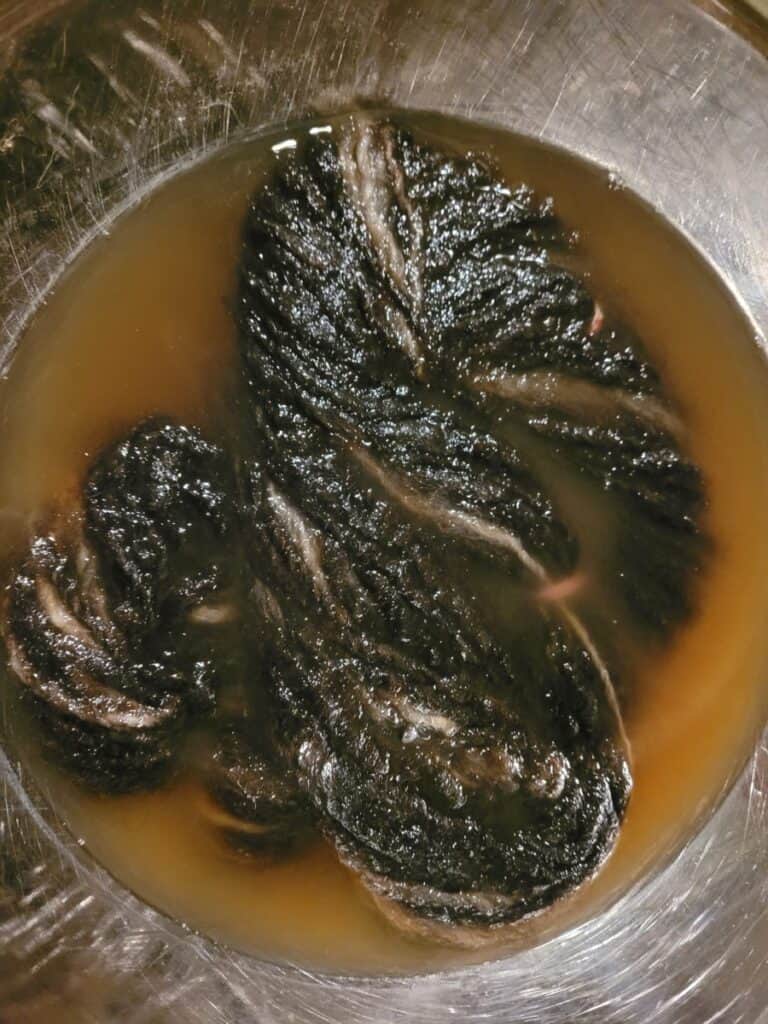
Suint is sheep sweat
Suint is basically sheep sweat that is on all wool before it is washed. Suint is water soluable and not greasy.
Suint is easily removed from wool by using a suint soak, which is an overnight soak in lukewarm water that gives all of the sweat and dirt in the wool time to move from the wool to the water.
A suint soak will get quite a bit of dirt out of the wool. Anytime I have used one, I am constantly surprised at how muddy the water ends up!
Once the wool has soaked overnight, you give the wool a rinse, to get out the last of the dirt and suint, let it dry and then start carding.
This gives you a fairly clean wool to spin with that still has the lanolin in the wool.
Do you have to remove suint before spinning?
If the wool is fairly clean and you like working with it straight off the fleece, then you do not need to put the wool through a suint soak before spinning.
Keep in mind, however, that not only is the suint soak removing the sweat, it is also removing the dirt.
If you choose not to soak the wool, most of the suint and dirt will come out later in the water you use to set the twist, so it won’t be there forever, but it will be there now!
If you feel the wool is too dirty to use as is, put it through a suint bath to get out the dirt, but keep the lovely lanolin intact.
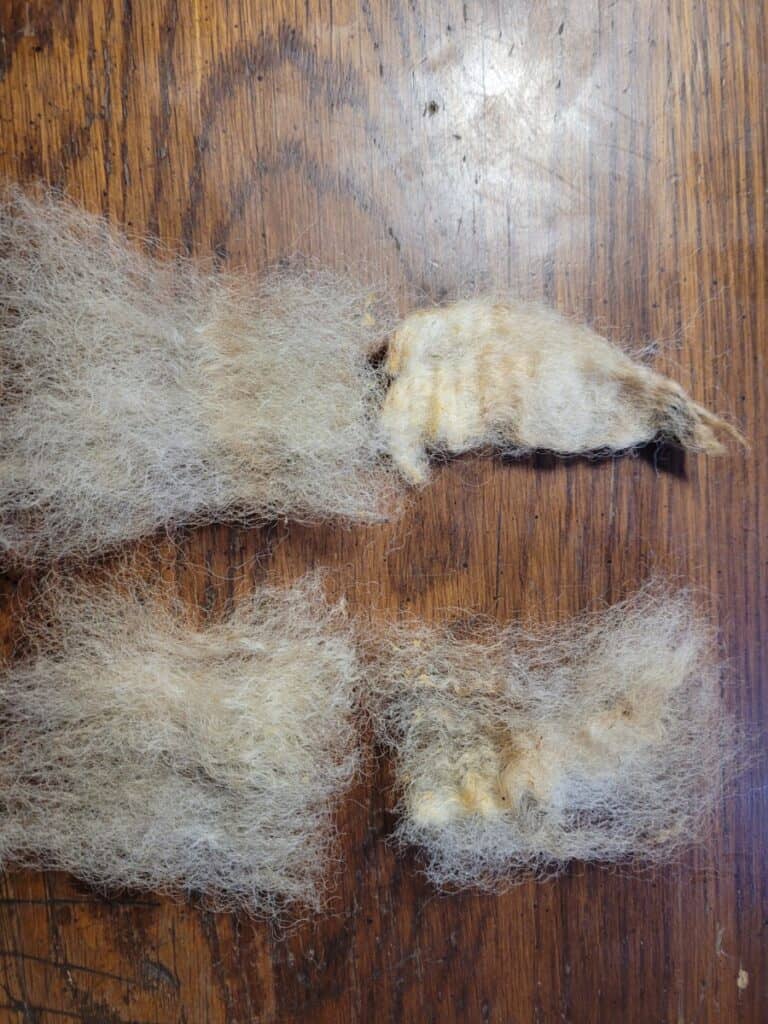
Lanolin is grease in the wool
Lanolin is the grease in the wool that the sheep makes throughout the year. Lanolin is similar to the grease in your hair produced by the skin on your scalp.
Lanolin is also the reason why some wool is sticky or hard, especially as it ages. The lanolin naturally hardens, making the wool discolored and difficult to work with.
If you want to keep some of the lanolin in the wool you are going to be spinning, consider using a suint soak (as outlined above) to clean the wool, rather than washing it.
Since lanolin is a grease, if you want to remove it from the wool, you’ll need to use a detergent or fiber wash to actually wash the wool and remove the grease.
Amount of lanolin varies by breed of sheep
The amount of lanolin in the wool varies, quite a bit, by the breed of sheep that the fleece came from.
Some breeds are as high as 45-50% grease loss, meaning that when you wash the fleece if you started with a 10 pound fleece, you’ll end up with 5-5.5 pounds of washed wool.
The other 4 pounds of weight, in this case, was the lanolin and dirt that collected on it. Fine wool fleeces tend to have higher grease percentages and will also have a lower clean wool yield.
Not all sheep fleeces are overly greasy, but all raw fleeces will have some lanolin.
Many medium and long wool fleeces are fairly low in grease and will keep most of their weight when they are washed.
These fleeces are in the 25-30% grease range, so you’ll keep 70-75% of the weight of the fleece in clean, washed wool.
This post contains affiliate links, which means I receive commissions if you choose to purchase through links I provide (at no extra cost to you).
How do you remove the lanolin from wool?
If you want to remove the lanolin from wool, you need to wash the wool with a fiber wash that is specifically made for wool.
To wash the wool, you’ll need a water tight container that can easily hold all the wool you plan to wash plus have some extra room, you don’t want to cram the wool in. It won’t get clean!
Basically, you’ll put in the hot water, add the fiber wash then add the wool.
Unicorn Power Scour is the wool wash I use on raw fleece. Occasionally, I also use a drop or two for wet setting yarn.
You’ll have to repeat this, at least once, maybe more times, depending upon how much wool you have, how dirty it is and how much fiber wash you used.
For complete raw wool washing instructions, read How To Wash Raw Wool Fleece.
Some folks use dish detergent, rather than a fiber wash, but I don’t care for the results when I have used dish detergent to wash wool.
The dish detergent seems to leave the wool parched and it takes a lot of detergent, as well. I have also had it leave white wool dingy, rather than white.
If you are keeping the lanolin, do not use detergent
If you are planning on using the lanolin, it’s a popular skin care ingredient, then you’ll need to remove the lanolin without using any fiber wash or other detergent.
To do this you would need to cook the wool in a pot with plenty of water to remove the lanolin from the wool, remove the wool from the water with tongs, then let the water cool.
The lanolin will be floating on top. The amount of lanolin you’ll get will vary greatly with the wool you used to begin with. If you want more lanolin, start with a greasier fleece, like a fine wool.
A word of caution: some countries have a pour on (externally applied) pesticide for sheep that prevents flystrike (maggots).
If the wool you are using is from a sheep that was dosed with this pour on, don’t use the lanolin. Source your wool from a farm that does not use these chemicals.
Josefin Waltin Spinner has an interesting article on Washing Fleece, going over her preferred way of washing which leaves the lanolin in the wool for spinning.

